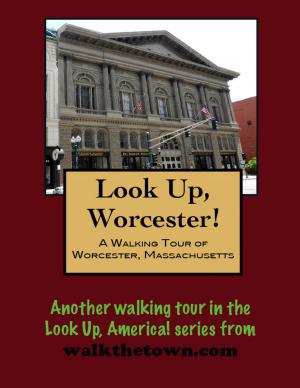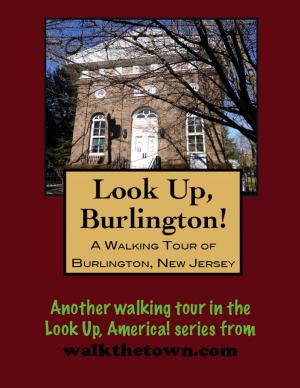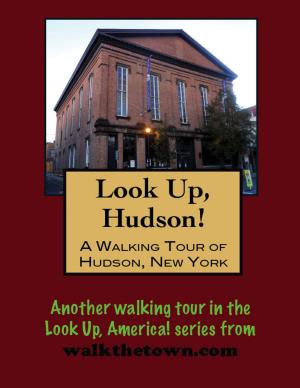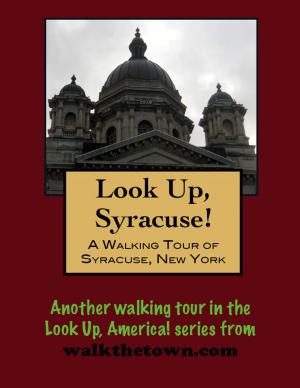| Author: | Doug Gelbert | ISBN: | 9781458048806 |
| Publisher: | Doug Gelbert | Publication: | February 1, 2011 |
| Imprint: | Smashwords Edition | Language: | English |
| Author: | Doug Gelbert |
| ISBN: | 9781458048806 |
| Publisher: | Doug Gelbert |
| Publication: | February 1, 2011 |
| Imprint: | Smashwords Edition |
| Language: | English |
There is no better way to see America than on foot. And there is no better way to appreciate what you are looking at than with a walking tour. Whether you are preparing for a road trip or just out to look at your own town in a new way, a downloadable walking tour is ready to explore when you are.
Each walking tour describes historical and architectural landmarks and provides pictures to help out when those pesky street addresses are missing. Every tour also includes a quick primer on identifying architectural styles seen on American streets.
By the 1830s both the Erie Canal and the Buffalo and Niagara Falls Railroad had come together at the Niagara River, assuring the industrial development of the Town of Tonawanda that had been settled here back in 1805. The first to take advantage of the advantageous situation was the East Boston Timber Company that purchased timber rights on White’s Island, now Tonawanda Island, in 1833. Soon they were loading barges high with fine white oak bound for eager markets on the Eastern seaboard.
But it was not the hardwoods of western New York that were to make Tonawanda but the seemingly limitless supply of high quality white pine from the vast forests of the Upper Midwest in Michigan and Minnesota and Wisconsin. In 1861, J. S. Noyes created the first practical cargo barge for open water by removing the mast and deck from an old schooner, an invention that revolutionized Great Lakes shipping. Timber would be loaded onto barges and pulled - sometimes four or five at a time - across the Great Lakes by steam tugs bound for Tonawanda and a trip down the Erie Canal.
Tonawanda, developed on both sides of the Erie Canal/Tonawanda Creek, split in 1865 when North Tonawanda was incorporated as a village. There was some ongoing nastiness over the use of a gravel pit but mostly the political management of communities in two different counties was becoming unwieldy. It was North Tonawanda that became “Lumber City.” The first cargo of lumber unloaded for distribution was in 1867. By 1890 over 700,000,000 feet of sawed lumber was docked here and for a brief time North Tonawanda was the world’s largest lumber port.
There were more than 150 lumber companies operating in town. Most were dealing in the usual suspects - fence posts, railroad ties, wooden laths and the like. J.S. Bliss and Company became the second largest manufacturer of shingles in the world, turning out as many as 56,000,000 white pine shingles of all shapes and sizes in a single season. The Ray H. Bennett Lumber Company produced kit homes sold around the nation and Canada for 70 years. But the abundance of lumber also attracted some more colorful manufacturers: Allan Herschell was turning out the nation’s finest merry-go-rounds with hand-carved wooden horses by the 1880s and Rudolph Wurlitzer established a plant for crafting organs in 1908.
When the lumber fields were depleted and the railroads pushed further west, new industries of steel, paper, chemicals and auto parts manufacturing set up shop due to the established bulk transportation infrastructure. Today the lumberyards are all gone and so are the rapids in the water that led the Senecas to call it Tonawanda Creek meaning “Swift Running Water.” Our walking tour will work into the neighborhood spawned by the wealth of that lumber but first we will begin at the spot that started it all, looking out at the western end of the historic Erie Barge Canal...
There is no better way to see America than on foot. And there is no better way to appreciate what you are looking at than with a walking tour. Whether you are preparing for a road trip or just out to look at your own town in a new way, a downloadable walking tour is ready to explore when you are.
Each walking tour describes historical and architectural landmarks and provides pictures to help out when those pesky street addresses are missing. Every tour also includes a quick primer on identifying architectural styles seen on American streets.
By the 1830s both the Erie Canal and the Buffalo and Niagara Falls Railroad had come together at the Niagara River, assuring the industrial development of the Town of Tonawanda that had been settled here back in 1805. The first to take advantage of the advantageous situation was the East Boston Timber Company that purchased timber rights on White’s Island, now Tonawanda Island, in 1833. Soon they were loading barges high with fine white oak bound for eager markets on the Eastern seaboard.
But it was not the hardwoods of western New York that were to make Tonawanda but the seemingly limitless supply of high quality white pine from the vast forests of the Upper Midwest in Michigan and Minnesota and Wisconsin. In 1861, J. S. Noyes created the first practical cargo barge for open water by removing the mast and deck from an old schooner, an invention that revolutionized Great Lakes shipping. Timber would be loaded onto barges and pulled - sometimes four or five at a time - across the Great Lakes by steam tugs bound for Tonawanda and a trip down the Erie Canal.
Tonawanda, developed on both sides of the Erie Canal/Tonawanda Creek, split in 1865 when North Tonawanda was incorporated as a village. There was some ongoing nastiness over the use of a gravel pit but mostly the political management of communities in two different counties was becoming unwieldy. It was North Tonawanda that became “Lumber City.” The first cargo of lumber unloaded for distribution was in 1867. By 1890 over 700,000,000 feet of sawed lumber was docked here and for a brief time North Tonawanda was the world’s largest lumber port.
There were more than 150 lumber companies operating in town. Most were dealing in the usual suspects - fence posts, railroad ties, wooden laths and the like. J.S. Bliss and Company became the second largest manufacturer of shingles in the world, turning out as many as 56,000,000 white pine shingles of all shapes and sizes in a single season. The Ray H. Bennett Lumber Company produced kit homes sold around the nation and Canada for 70 years. But the abundance of lumber also attracted some more colorful manufacturers: Allan Herschell was turning out the nation’s finest merry-go-rounds with hand-carved wooden horses by the 1880s and Rudolph Wurlitzer established a plant for crafting organs in 1908.
When the lumber fields were depleted and the railroads pushed further west, new industries of steel, paper, chemicals and auto parts manufacturing set up shop due to the established bulk transportation infrastructure. Today the lumberyards are all gone and so are the rapids in the water that led the Senecas to call it Tonawanda Creek meaning “Swift Running Water.” Our walking tour will work into the neighborhood spawned by the wealth of that lumber but first we will begin at the spot that started it all, looking out at the western end of the historic Erie Barge Canal...















